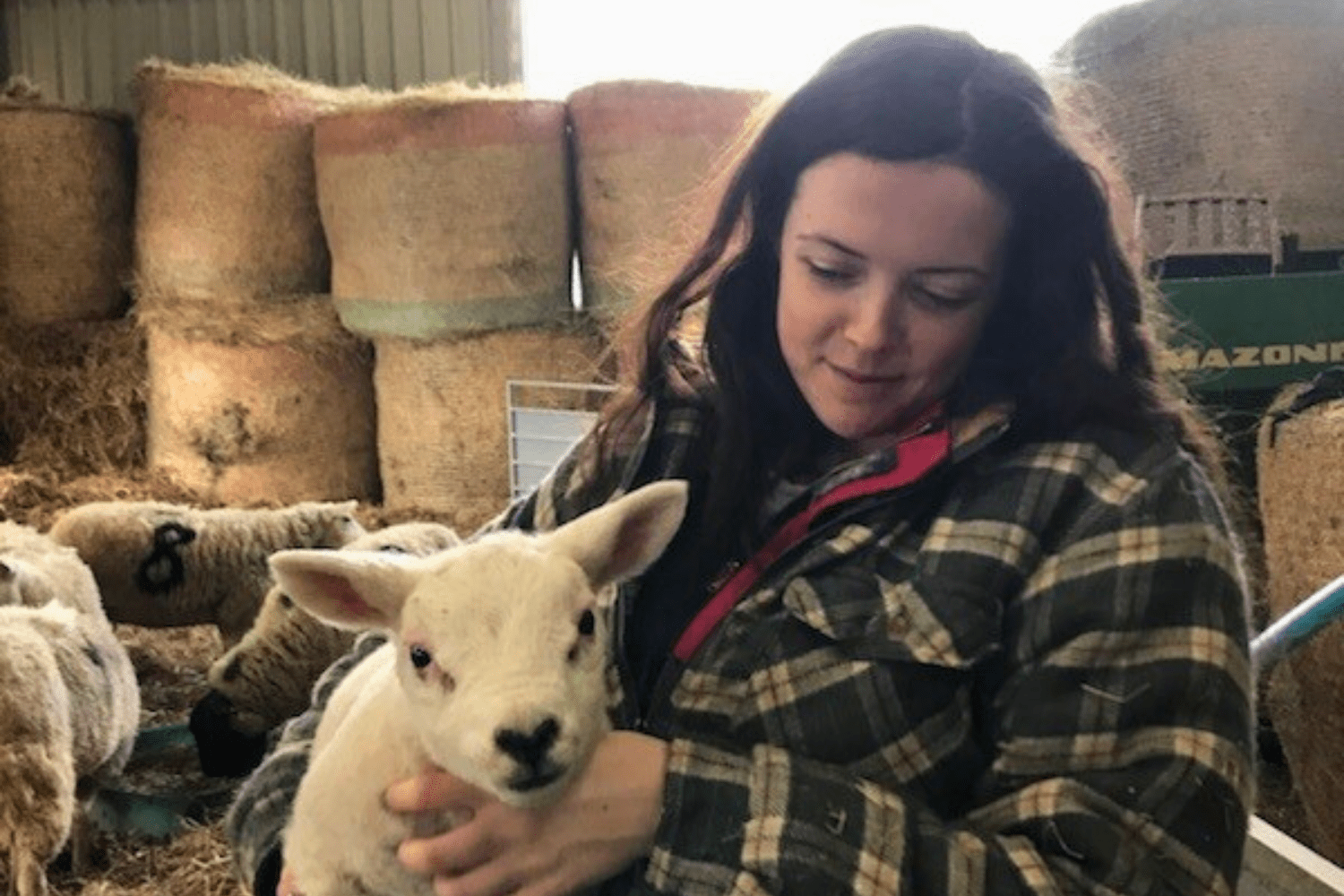In our latest blog post, we had the pleasure of sitting down with Deb Laird, who has a strong passion for farming and enjoys rolling up her sleeves to lend a hand during lambing season. We asked her about her experiences of lambing, offering us a glimpse into the joys and challenges of life on the farm.
Please tell us about yourself and how you got into farming.
“I grew up on a beef and arable farm in Lincolnshire which led me to study Business Management & Marketing at Harper Adams University and have worked in agri-marketing agencies since graduating in 2018. I moved to my partner’s family beef and sheep farm in South Wales after University and currently we are lambing 450 sheep. I love helping on the farm and with lambing in my spare time!”
Can you explain what lambing season is and why it’s an important time for farmers?
“Lambing season typically runs from February to May in the UK, and is the time when ewes give birth to their new-born lambs. Some farmers start lambing as early as November, with the majority of the UK lambing from March-April, we lamb from the 1st March.
The rams mate with the ewes from the start of October, and ewes are pregnant for 5 months. Some farms lamb their sheep in the field, but we bring all our ewes into the lambing sheds 6 weeks before they lamb, so we can keep a closer eye on them indoors.
It is a busy time for farmers because although some ewes lamb easily and can take care of their lambs on their own, some need assistance giving birth – meaning we’re always in the lambing shed checking if any ewes need assistance!”
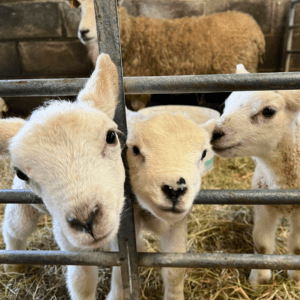
What are some of the key tasks involved in preparing and managing lambing season?
“We scan the ewes at Christmas time so we know whether they’re in lamb with 1, 2, or 3 lambs – we call them singles, twins and triplets!
The last six weeks of pregnancy are really important as this is when the majority of foetal growth takes place, so we group the ewes into singles, twins and triplets, and feeding them accordingly so the ewe gets the right nutrition for a healthy pregnancy and a healthy start to the lambs life. For example, ewes carrying one lamb need less energy than those carrying two, so they’re kept on different feed rations.
If an ewe doesn’t get enough food when she is pregnant, the lamb will be born too small and the ewe might not have enough milk to feed it. Equally, if the ewe has too much food, the lambs might be too big and the ewe could struggle to give birth. We also vaccinate ewes a month before lambing, in order for the lambs to have passive immunity to common diseases.”
How do you ensure the health and well-being of both the ewes and lambs during lambing?
“We need to monitor the newborn lambs to make sure they’re fit and healthy, and that they’re getting enough milk from the mother, otherwise we may need to bottle feed the lambs.
In the first few hours of birth it is important that the lamb receives colostrum from its mother. Colostrum is the first milk that the ewes produce when they give birth, which is high in nutrients, but most importantly, contains antibodies which protect the newborn lambs from diseases.
Lambs are born without any antibodies, and their ability to absorb antibodies rapidly declines after birth. A strong, healthy lamb, up and sucking within 15 minutes of birth has a 90–95% chance of still being alive 90 days later (Source) – that’s why it’s so important we regularly check on any new-born lambs!
After 2 days (weather dependent), we turn the ewes and lambs out into the field. We pair the lambs and ewes up by spraying corresponding numbers or letters on to the ewes and lambs, so we can recognise a lamb if we need to check on it again later, and so we’re able to match them back up to their mother if they end up separated in the field. We use numbers for singles and letters for twins so we know if it’s one or two lambs we’re looking for.”
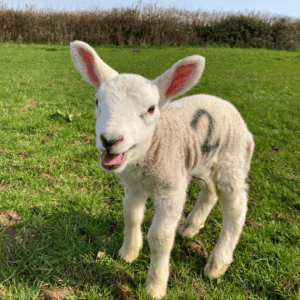
Can you describe any memorable experiences you’ve had during last year or this year’s lambing season?
“We had a ewe with triplets early in the season but she only had enough milk to feed two, so we had to bottle feed the third. Our Labrador, Nel, mothered the lamb – so we named him Nelson!”
What factors – for example weather – can impact lambing and how do you manage these challenges?
“This year has been particularly difficult with the wet weather – it’s much better to turn the ewes and lambs out in sunny conditions to give them the best possible start, but that hasn’t been possible this year due to the rain. We have to turn them out though otherwise we’d run out of space in the lambing sheds!”
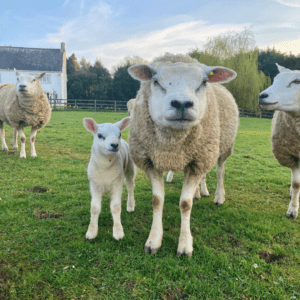
Does any form of technology or modern farming practices contribute to the success of the lambing season?
“For the past two years we have installed cameras into the lambing shed which we can monitor on our phones. This helps us monitor the sheep (particularly overnight), without going into the sheds and disturbing them.”
Can you share any interesting facts about sheep or lambs that people may not be aware of?
“Ewes commonly have 1 – 3 lambs each (the average is 1.7), but there is a world record of 8 lambs!”
What are some of the rewards/joys of lambing season for you?
“Seeing the lambs running around the fields on a sunny day!”
How does lambing season fit into the broader cycle of farming?
“For us, we finish lambing at the end of March and then it’s straight into calving in April! We’ll rear the lambs over the summer and keep a few as replacement ewes, but most will be sold as fat lambs in an auction market at the end of the summer.
Over the summer we’ll make hay and silage, and store it for next winter’s feed when the cows come indoors for winter. And then the cycle begins again in October when the rams go back to the ewes!”
What advice would you give to someone who is unfamiliar with farming but wants to learn more about lambing?
“There are so many great social media accounts that share a daily insight into sheep farming in particular, including @redshepherdess and @emmagrayshepherdess, or check out any local lambing experiences where you can get involved with lambing first hand!”
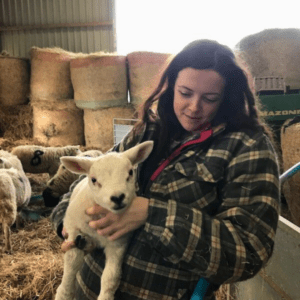
Thank you very much Deb for your time, we’ve loved learning all about Lambing!
